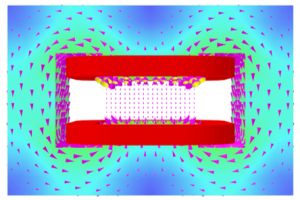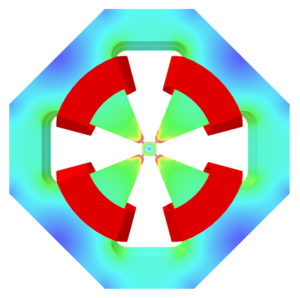
This blog was originally published in December 2020.
2020 has reminded us of the importance of science, and of scientists. Here at Dassault Systèmes, within the SIMULIA Brand, we help our customers work on multiple scales, from micro to macro, and on into functional, to “reveal the world we live in.” At one end of that scale, physicists are investigating the fundamental building blocks of our world, using particle accelerators to perform experiments in the field of nuclear and particle physics. In high-energy particle colliders, beams of charged particles moving close to the speed of light are brought together in controlled collisions to investigate the resulting emissions using sophisticated detectors. Circular accelerators, known as synchrotrons, can also use the intense light (billions of times brighter than the sun and a by-product of the acceleration process) to study chemical states and the dynamics of biological processes. In recent times, the important field of mapping the internal structure of proteins, viruses and vaccines is using synchrotron light.
A fundamental part of any particle accelerator is the magnets used to control the beam; and these need to be designed accurately if the beams are going to remain focused and collide at the desired point. Earlier this year, Dr. Ben Pine, one of our Industry Process Experts and a former Particle Physicist at the Rutherford Appleton Laboratory, looked at how SIMULIA Opera is used to support the design of different types of magnets, with each performing a specific role in these ground-breaking devices.
Dr. Pine explained how particle accelerators could take different forms, but in each there will commonly be bending magnets, focusing magnets, correctors, and kickers. Typical design considerations include desired outcomes, such as flux density and homogeneity, while observing constraints such as induced forces and heat fluxes and remaining in the desired operating parameters of available materials. Bending magnets, as their name suggest, use the forces exerted on the particle due its movement in a magnetic field to steer the beam. Whereas focusing magnets use field gradients to focus the beam into its desired cross-section. Other imperfections in the beam can be addressed using higher order multipole magnets, supplementing the dipoles and quadrupoles commonly used for steering and focusing. These types of magnets could be DC, but they could also be pulsed or programmable. Kicker magnets are pulsed rapidly, redirecting the beam to a new trajectory. Due to the ever-higher magnetic fields required to advance this science, superconducting magnets are often used, which exploit the behavior of superconductors to conduct very high electrical currents at zero resistance. Considering the fact that these accelerators are continually pushing the boundaries of science, the only way to design and build these devices with confidence is by using simulation to predict their performance, both during normal service and during potential operational faults such as a quench of the magnet.

During a recent eSeminar, Dr. Pine was joined by Dr. Alex Bainbridge of Science and Technology Facilities Council’s Daresbury Laboratory, where Dr. Bainbridge has worked on a range of accelerators, including novel designs for permanent magnet devices. These are looking to address the issue of ever-increasing power consumption in the pursuit of higher fields to produce higher energies. As Dr. Bainbridge explained, a current large accelerator facility might draw 200MW of power, while ones currently under consideration, if they continued to use electromagnets, might have a power requirement three times that. That is not sustainable, not environmentally friendly, and this type of connection to the power grid would have to be carefully considered. Daresbury responded by looking at the use of permanent magnets to supply the magnetic fields required for certain functions. The magnets under consideration are tuneable for use in different locations along the accelerator, in order to avoid having to manufacture thousands of one-off magnets. The tuneable magnets present several design challenges besides the electromagnetic performance, for example in accurately calculating resulting forces (of up to 8 Tonnes) and engineering a structurally sound device. Simulation is the only efficient way to perform studies to look at the effects of manufacturing and assembly tolerances on the performance of the final magnet in-situ.
If you would like to hear Dr. Pine and Dr. Bainbridge talk more about this subject, the eSeminar is available on-demand, here.
SIMULIA offers an advanced simulation product portfolio, including Abaqus, Isight, fe-safe, Tosca, Simpoe-Mold, SIMPACK, CST Studio Suite, XFlow, PowerFLOW and more. The SIMULIA Community is the place to find the latest resources for SIMULIA software and to collaborate with other users. The key that unlocks the door of innovative thinking and knowledge building, the SIMULIA Community provides you with the tools you need to expand your knowledge, whenever and wherever.

